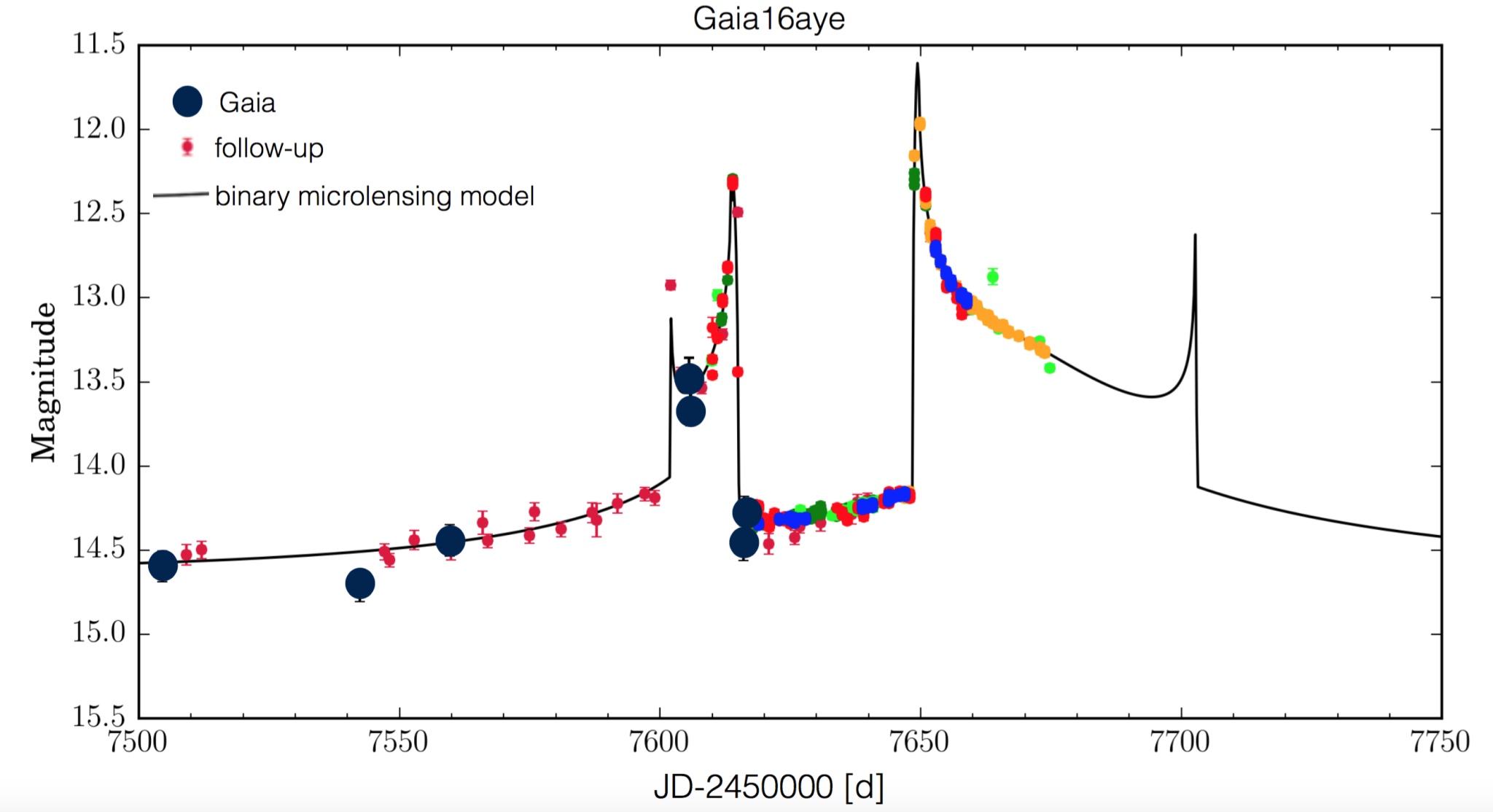Two microlenses in the arms of the Milky Way, image of the week of the Gaia mission [NOT TRANSLATED]

The Gaia Science Alerts project has already reported more than 1000 transient events, mainly dominated by supernovae and cataclysmic variables. In July and August 2016 the first microlensing events were detected. Microlensing happens when light rays from a distant star (we call this the source) are bent by the space-time curvature of an object (e.g. a star, a planet, or a black hole), lying exactly between the observer and the distant star. This hitherto unseen object is called the lens, and being closer to us, and moving faster across the sky, leads to a sometimes dramatic increase (and then decrease) in the brightness of the background source. These two Gaia events are a little unusual, because they were found towards the Galactic spiral arms, while most microlensing events are found in studies which concentrate on the central region (the Bulge) of the Milky Way.
The first microlensing event, called Gaia16aua, was identified independently by both Gaia and by the ground-based Optical Gravitational Lensing Experiment (OGLE). The second microlensing event, called Gaia16aye, might be even more exciting showing an interesting lightcurve as shown in the figure above.
Gaia16aye has been followed-up from the ground very intensively and more than 6000 data points were collected so far by a dedicated follow-up team (listed at the end). The light curve of the event exhibits characteristic U-shaped changes and sudden sharp increases and decreases in brightness. These distinctive features are typical for a microlensing event when the lens is not a single object, but rather a pair. In this case the lens is likely to be a binary star system sitting in its complicated space-time geometry. This creates caustics, which lead to sudden jumps in brightness when crossed by the light rays from the lensed source.
microlente
Light curve of the microlensing event Gaia16aye, composed by data from Gaia (dark spots) and supported by data from ground-based follow-up telescopes (each colour indicates a different observatory). The solid black line shows the current best microlensing model computed by Przemek Mróz. The sharp rises are called caustic crossings as explained in the text below.
Credits: ESA/Gaia/DPAC, Gaia Science Alerts Group (Institute of Astronomy, Cambridge), Lukasz Wyrzykowski (Warsaw)
As can be seen in the figure, the model predicts another sharp rise in brightness which is expected to happen in the first or second week of November 2016. We are currently waiting for the final predicted re-brightening, which will help solve the puzzle of the exact nature of the components of the binary system. Gaia16aye is the perfect example of the importance of ground-based follow-up of Gaia Alerts, carried out by professionals but also by amateur astronomers, which can make a huge scientific impact. Indeed, it would have been quite difficult to confirm Gaia16aye as a microlensing event without the extra follow-up, and certainly the binary nature of the lens, and constraints on the system components would be impossible.
ESA website [NOT TRANSLATED]
